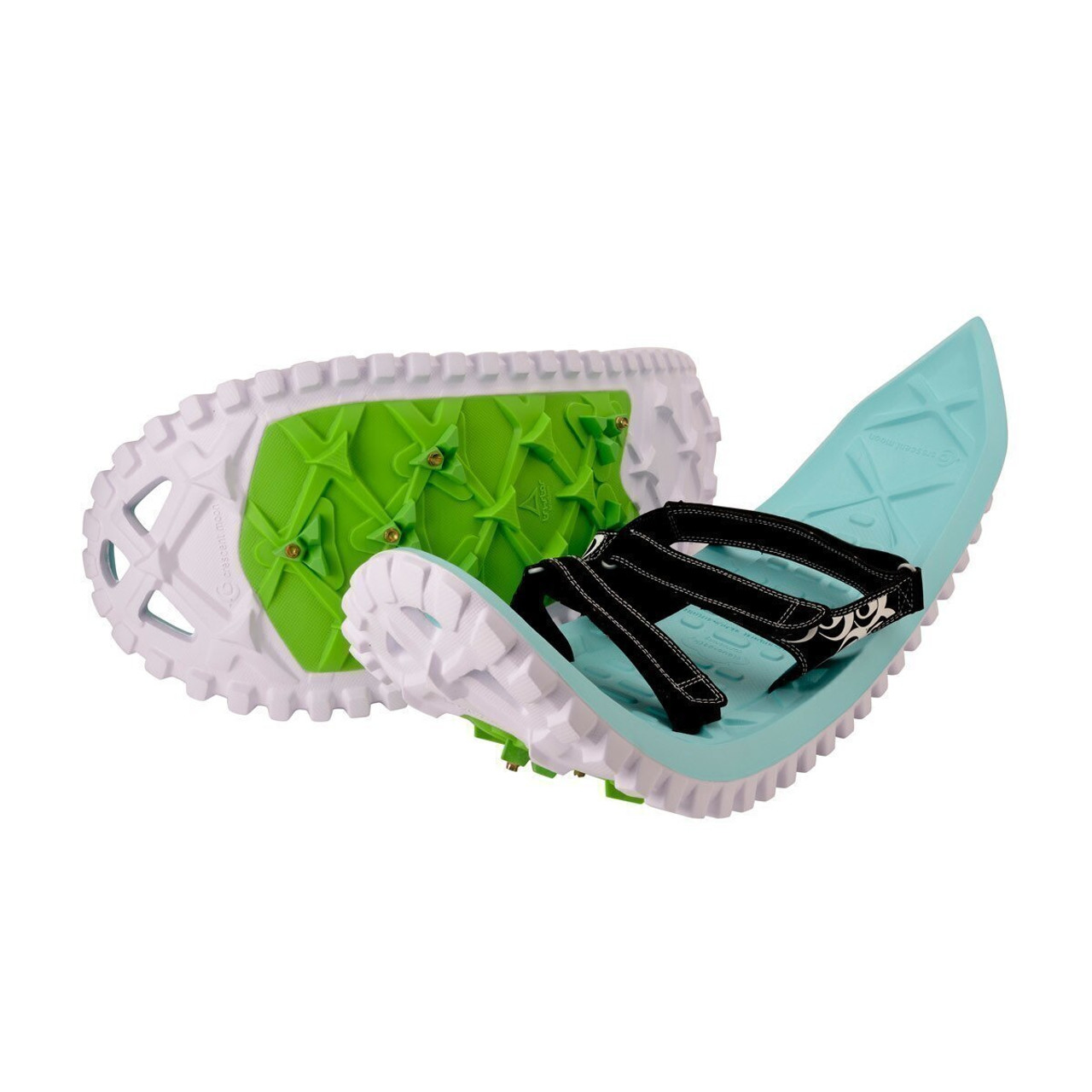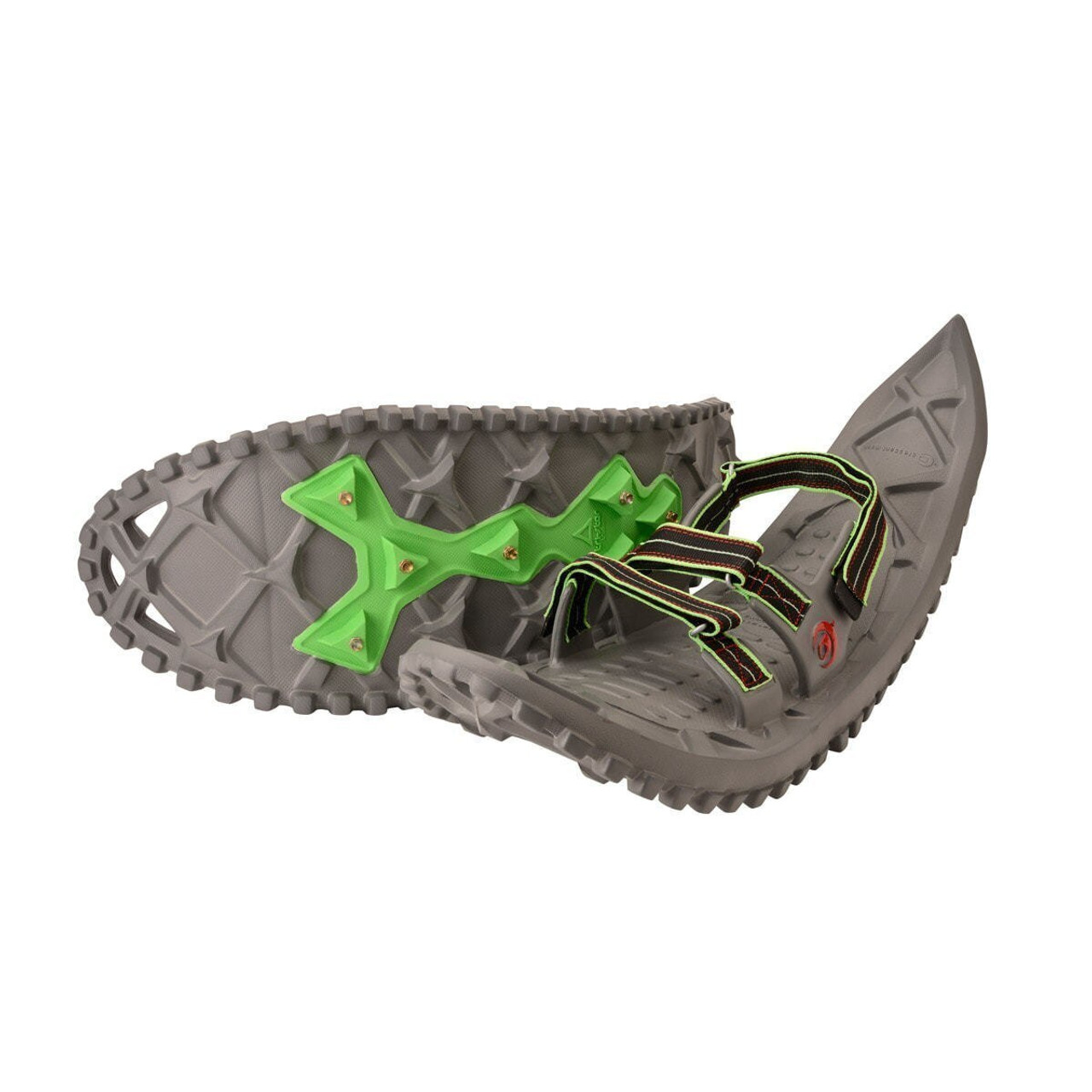Fundamentals of Snowshoeing Safety
Posted by Crescent Moon on May 21st 2021
The winter landscapes that snowshoers explore (with their Crescent Moons, of course) are beautiful, but they’re also potentially fraught. A number of the primary risks outdoors people face year-round are cranked up a few notches in wintertime. Dangerous weather can mean subzero temperatures and whiteout blizzards, and treacherous terrain may take the form of iced-over waterways and mountainsides shedding massive, fast-moving avalanches.
The good news is that with the proper preparation and the right state of awareness, snowshoers can drastically minimize these dangers and focus on enjoying what (and we might be biased) is one of the very best ways to enjoy the great outdoors.
In this post, we’ll run down some Snowshoeing Safety 101!
Winter Snowshoe Essentials: Packing Sensibly
Many of the essentials you want in your pack when snowshoeing are the same as you’d bring along for any outdoor activity. These include a map and compass (perhaps complemented, but not replaced, by a GPS unit), a cell phone, first-aid kit, warm backup clothing layers, extra food and water, emergency fire-starting materials, and such means of signaling your location as a mirror or whistle.
You also want to bring along a lightweight shovel, which can be used to build an emergency snow shelter or uncover avalanche victims. And speaking of avalanches, snowshoers in mountainous terrain prone to those snowslides should also carry an avalanche probe, beacon, and an avalanche airbag.
Winter Vehicle Essentials For Snowshoe Trips
Don’t forget to properly prepare your car for winter travel as well. Depending on where you’re going, the diciest part of your snowshoe outing may well be driving to the trailhead! Install snow tires and carry tire chains, kitty litter, a (full-size) shovel, blankets or sleeping bags, jumper cables, and backup automotive fluids. Always obtain as up-to-date information on road conditions where you’ll be traveling as possible.
Share Your Snowshoe Itinerary and Snowshoe Together Whenever Possible
You’re always safer out there with a few companions along. This is not to say that solo snowshoeing isn’t wonderful, but just be aware that—like solo hiking, solo mountain biking, solo kayaking, or any other solitary outdoor pursuit—it’s inherently riskier than hitting the snowshoe trail in a group.
Whether you’re snowshoeing alone or with others, share the details of your outing with folks back home just in case you end up needing rescue.
Take Heed of the Weather Forecast
For every calm, bluebird day out there in the snowy woods or hills, there’s a socked-in or blizzardy one. When planning a snowshoe hike, watch the weather forecast closely and do your best to schedule around any spates of bad weather. It’s a good idea to carry an NOAA weather radio in your pack as well—particularly if you’re going on a multi-day adventure—so you can keep track of changing conditions. Always remember the weather can take an unexpected turn for the worse.
If you’re snowshoeing in avalanche country, you also want to pay attention to forecasts from the regional avalanche center and note how shifting weather patterns may make the terrain more or less risky from an avalanche perspective.
Snowshoe Avalanche Safety
Speaking of, snowshoers in the mountainous country must verse themselves in avalanche safety. Ideally, this means taking an avalanche safety course: a hugely valuable investment of time for any outdoor enthusiast looking to spend time in the wintry heights. We’ll cover avalanche safety in more detail in a separate blog post—it’s a big, important subject, to say the least—but remember to pack that aforementioned essential gear (probe, shovel, transceiver, airbag), evaluate terrain as you go (gauging slope, snow stability, and other fundamental factors), and don’t hesitate to scrap your hike if the avalanche danger is forecast to be significant or conditions become sketchy.
Other Snowshoe Terrain Hazards
Generally, avoid snowshoeing on the lake or river ice (although very experienced snowshoers may travel on certain frozen-over waterways if conditions are favorable).
On steep-edged ridgelines, hilltops, and peaks, be aware of cornices: those wind-sculpted, snowy overhangs on the lee side of such uplifts. Cornices can break without warning—including up along the snowpack well back of them over seemingly solid ground—so give them a very wide berth, despite the real temptation to edge close to the brink for the views.
When snowshoeing off-trail in dense forest—conifer forest in particular—be careful navigating through the trees: Especially in late winter or early spring, there may be very deep snow wells around the trunks, easy to topple into (or at least twist an ankle in).
Staying Safe on Snowshoes
Pack appropriately, stay weather- and avalanche-aware, and remain alert to changing terrain and conditions. You’re more likely than not to have a magical, carefree snowshoe trek out there in that winter (or spring) wonderland! And in Crescent Moon’s top-rated foam snowshoes and aluminum snowshoes, you’ll also have absolute confidence in your snowshoes!


